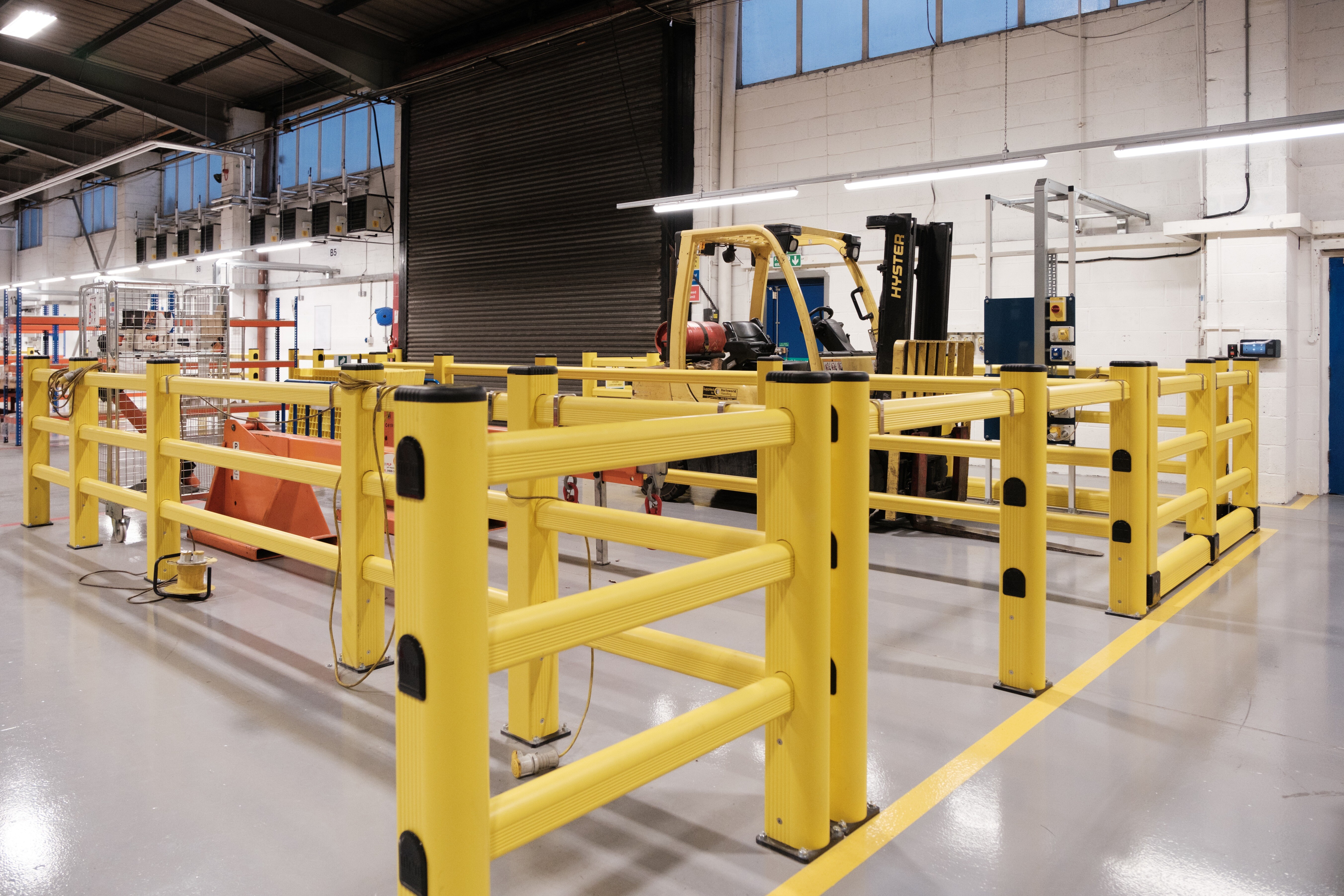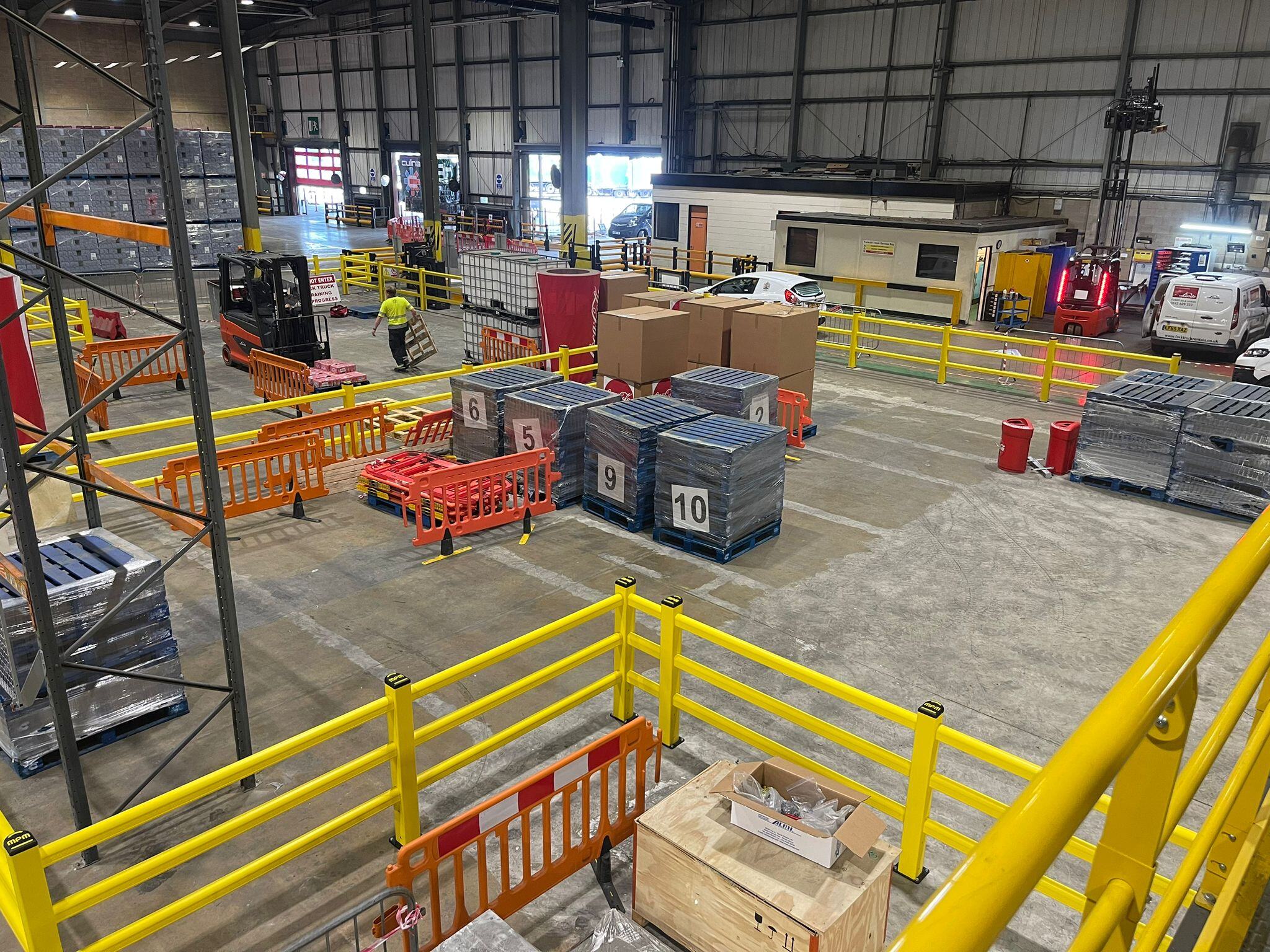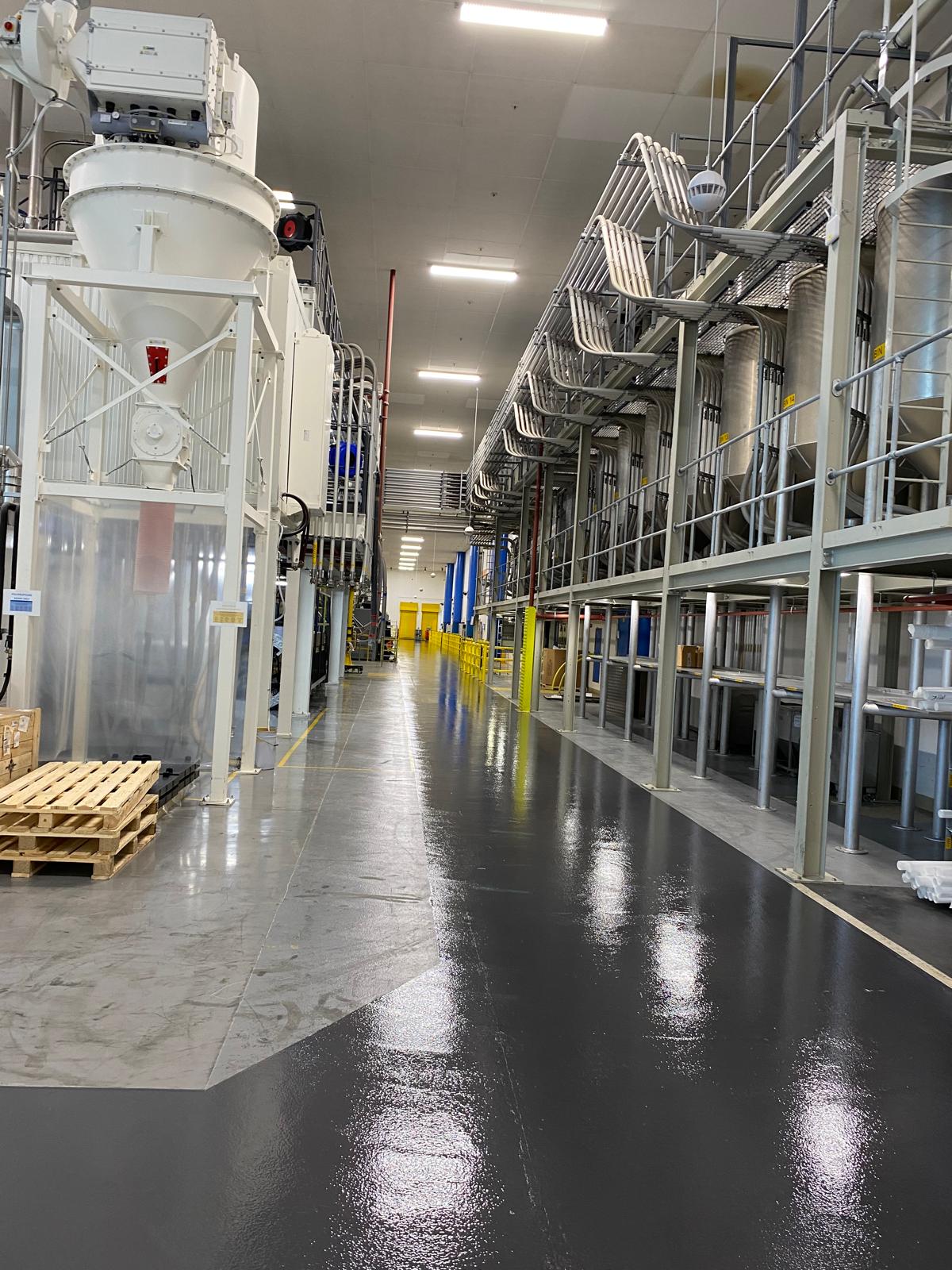Which Warehouse Barriers Can Really Take an FLT Impact? A Tale of Two Crashes
 By
Caleb Shaw
·
2 minute read
By
Caleb Shaw
·
2 minute read
When a forklift truck collides with a safety barrier in your warehouse, there’s no warning. No siren. What happens next depends entirely on the barrier you chose before the crash.
Let’s walk through two scenarios. Same facility. Same corner. Same 2.5-tonne forklift making the same tight turn.
The only difference? One warehouse uses steel barriers. The other uses polymer.
Sure, these are hypothetical scenarios. But similar incidents are happening daily in warehouses across the UK.
This article will cover the following topics
.jpeg?width=4886&height=2043&name=XT5A0233%20(1).jpeg)
Scenario 1: The Steel Barrier Takes the Hit
Sam’s been driving forklifts for 12 years. That morning, he was moving fast to make up for a delayed delivery. Turned the corner too sharp. Bang. Collided with a steel barrier.
At first glance, steel seems like the obvious choice. Heavy. Rigid. Industrial. But when steel meets force, it doesn’t flex, it fights back. That energy gets transferred into Sam’s spine, the truck’s frame, and the barrier itself.
The day after the incident:
- Barrier: Crumpled. Needs replacing. Custom part. Contractor required.
- Forklift: Bent forks. Out of service.
- Driver: Sore back. Sent home.
- Zone: Closed. Orders delayed.
What looked like a budget-friendly barrier solution during selection and installation has just turned into a £5,000+ disruption, and that's assuming there are no injury claims.

Scenario 2: Polymer Barriers Absorb the Impact
Now replay the same event, but swap the steel for a PAS 13-tested polymer barrier.
Same corner. Same speed. Same impact.
This time, the barrier flexes, absorbs the hit, and returns to shape like nothing happened.
The day after the incident:
- Barrier: Still intact. No parts needed.
- Forklift: Operational.
- Driver: A little rattled, but returned to work.
- Zone: Checked and reopened.

Let's Talk About Your Team
Forklift drivers work under pressure. They’re timing deliveries, watching blind corners, and avoiding foot traffic. When barriers fail, it’s not just the vehicle that suffers; it’s the person behind the wheel.
Every crash carries emotional fallout. Team morale drops. Confidence dips. People start second-guessing every move.
Good barriers don’t just protect infrastructure; they protect trust.
When your team sees you invest in protection that actually works, it shows you’ve got their back. And that creates a culture of care, not just compliance.
Inspectors, Audits, and Insurers Are Watching Too
The internal confidence is one thing, but don't forget about the external scrutiny.
- HSE: HSG136 says clear pedestrian-vehicle segregation isn’t optional.
- PAS 13: This is the gold standard for impact-tested barriers.
- Insurers: More crashes = more claims = higher premiums.
Polymer barriers that meet PAS 13 don’t just pass tests - they lower your risk profile. And yes, they save you money long term.
The Numbers Don't Lie
Still tempted by steel? 
Over 5 years, choosing rigid barriers could cost you over £25,000 in:
👉 Downtime
👉 Callouts
👉 Part replacements
👉 Insurance hikes
👉 Injury claims
Polymer is safer, smarter, and the ROI speaks for itself.
So, Which Barrier Would You Bet Your Warehouse On?
Take a walk through your site tomorrow morning. Stop at every barrier. And ask:
- If a forklift hit this today, what happens tomorrow?
- Am I investing in protection, or illusion?
- Would my team say, "Yeah, they’ve got us covered"?
Because when it comes to impact protection, it’s not a subtle difference. It’s the difference between chaos and continuity.

Ready to Make the Upgrade?
- Steel barriers = rigid, brittle, high-cost aftermath
- Polymer barriers = flexible, safe, built to recover
- Better protection = better safety culture, better business
Don’t wait for the crash. Prepare for it.
Because the best day to choose the right barrier was yesterday. The second-best? Today.




